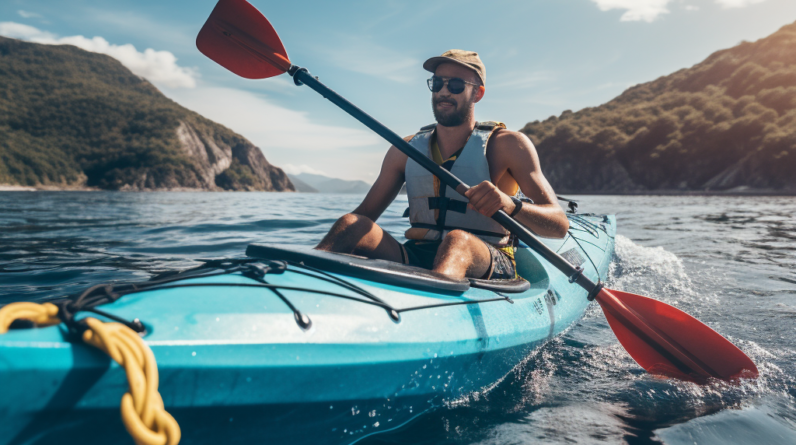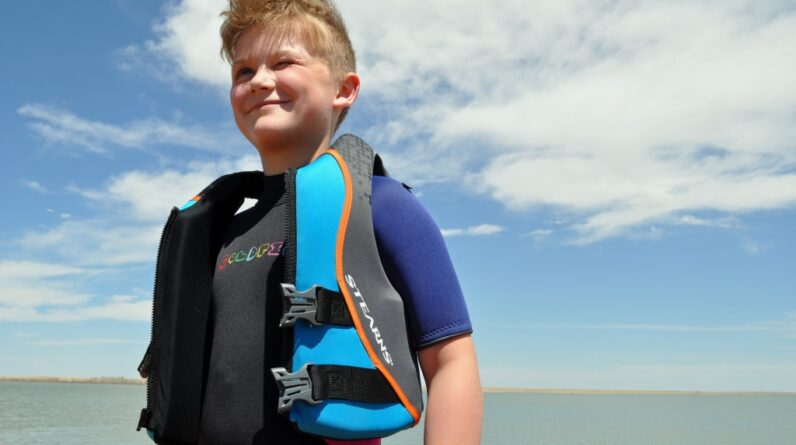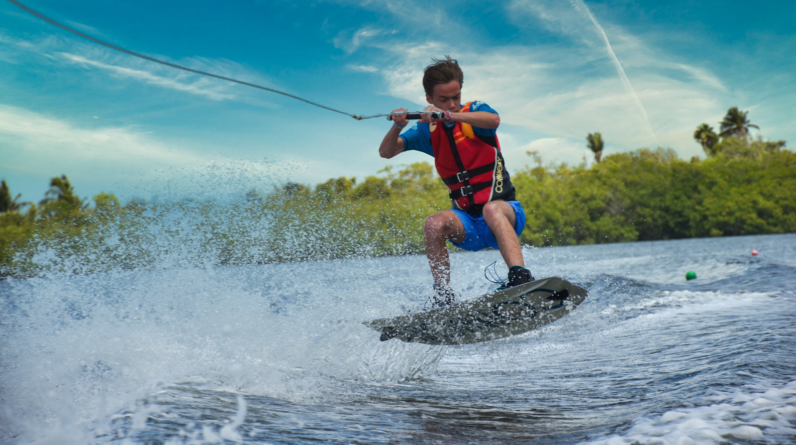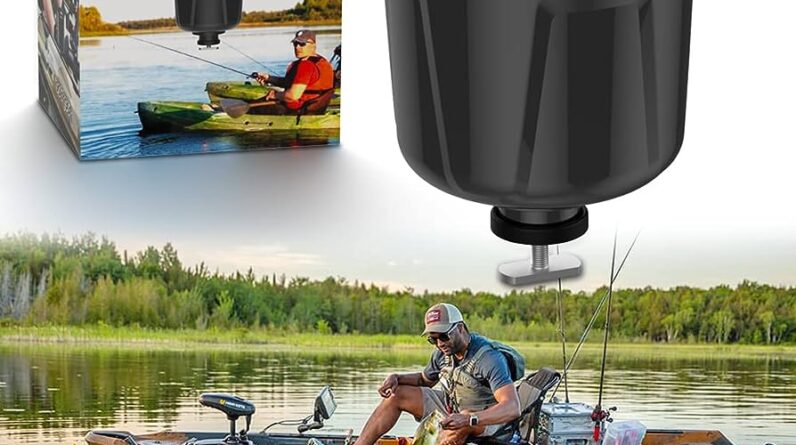
Have you ever wondered about the difference between a kayak skirt and a cockpit cover? Well, look no further! This article will help shed some light on this often confusing topic. By exploring the unique functions and purposes of both the kayak skirt and the cockpit cover, you’ll gain a better understanding of how each one can enhance your kayaking experience. So, let’s embark on this informative journey and unravel the mystery behind these essential kayak accessories.
Definition of Kayak Skirt
A kayak skirt, also known as a spray skirt, is a flexible covering that is used to seal the opening, known as the cockpit, on a kayak. It is usually made of waterproof and durable materials such as neoprene or nylon. The skirt is designed to fit tightly around the waist of the kayaker and securely attach to the cockpit rim, providing a watertight seal.
Material and Design
Kayak skirts are typically made from neoprene or nylon. Neoprene skirts are popular because they provide a snug and comfortable fit, while also offering excellent water resistance. They are often reinforced with additional layers or rubberized materials to enhance durability and prevent water from seeping through. Nylon skirts, on the other hand, are lightweight and more breathable, which can be beneficial in hot weather conditions.
In terms of design, kayak skirts may vary in style and features. Some skirts have a tunnel-style design, where the fabric extends up the torso of the kayaker, providing additional protection from water and wind. Others may have adjustable suspenders or braces to ensure a secure fit. Additionally, many skirts have a built-in grab loop or handle, making it easier to remove quickly in case of an emergency.
Purpose and Function
The primary purpose of a kayak skirt is to keep water out of the cockpit, providing a dry and comfortable paddling experience. When properly attached, the skirt creates a seal between the kayak and the paddler, preventing water from entering even during rough water conditions, waves, or rolling maneuvers. This is especially important in activities such as whitewater kayaking, where staying dry is crucial for safety and performance.
Additionally, kayaking skirts also offer protection from the elements. They can shield the kayaker from wind, rain, and flying debris, ensuring a more enjoyable and comfortable paddling experience. The snug fit of the skirt also helps to maintain body heat, keeping the kayaker warm in cooler water temperatures.
Definition of Cockpit Cover
A cockpit cover, as the name suggests, is a cover specifically designed to fit over the cockpit of a kayak when it is not in use. Unlike a kayak skirt, which is used while paddling, the cockpit cover is used for storage or transportation purposes, keeping the interior of the kayak protected from dust, debris, and water.
Material and Design
Cockpit covers are typically made of durable and water-resistant materials such as nylon or polyester. These materials are lightweight, yet sturdy enough to provide adequate protection for the kayak’s cockpit. Some covers may have a drawstring or elastic band, allowing for a snug and secure fit over the cockpit rim.
The design of cockpit covers is relatively simple. They are often shaped like a fitted cap, with the proper dimensions to cover the opening of the kayak’s cockpit. The covers may also feature a grab handle or loop for easy removal, as well as drainage holes to prevent the buildup of water.
Purpose and Function
The main purpose of a cockpit cover is to protect the interior of the kayak from dirt, debris, and water when it is not in use. This is particularly important when storing the kayak outdoors or during transportation. By covering the cockpit, the cover prevents rainwater, leaves, dust, and insects from entering the kayak, keeping it clean and ready for the next adventure.
Cockpit covers are also useful for preventing damage to the kayak’s outfitting or accessories. By keeping the cockpit sealed, the cover helps to prevent exposure to UV rays, which can fade and deteriorate the kayak’s components over time. It also acts as a deterrent against theft, as it conceals the contents of the cockpit from prying eyes.
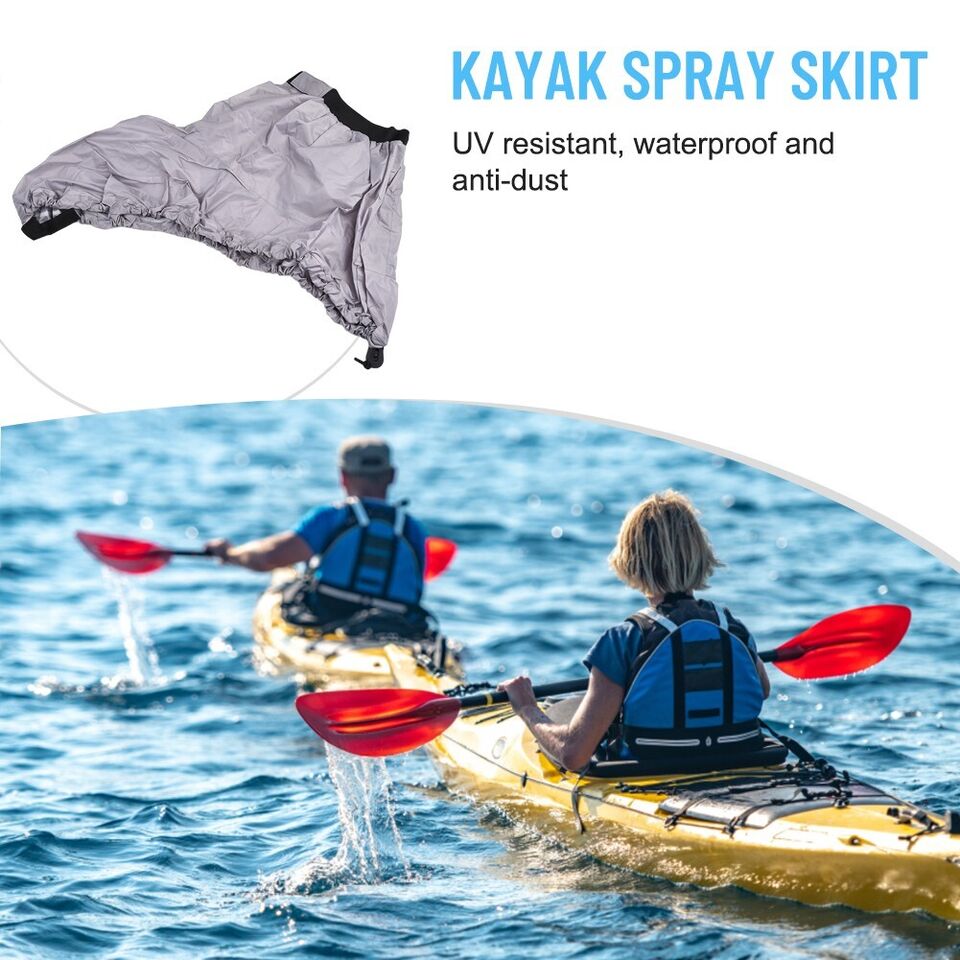
This image is property of i.ebayimg.com.
Choosing the Right Option
When deciding between a kayak skirt and a cockpit cover, there are several factors to consider that will help determine which option best suits your needs.
Kayaking Activity and Intensity
The type of kayaking activity you engage in and the intensity of your paddling will play a significant role in choosing the right option. If you are an avid whitewater kayaker or engage in kayaking activities that involve a lot of rolling or maneuvering, a kayak skirt is essential. It will provide the necessary protection from water and keep you dry and comfortable during intense paddling sessions. On the other hand, if you primarily use your kayak for recreational purposes and don’t anticipate encountering rough water conditions, a cockpit cover may be more than sufficient.
Weather Conditions
Consider the typical weather conditions you will be paddling in. If you frequently paddle in rainy or windy environments, a kayak skirt is advantageous as it offers superior protection against water and wind. However, if you mainly paddle in calm and sunny conditions, a cockpit cover may be more appropriate. It will keep your kayak free from debris and prevent sun damage to the interior components.
Transportation and Storage
Think about how you transport and store your kayak. If you often transport your kayak on a roof rack or open trailer, a cockpit cover can help protect the interior from road debris and UV exposure. It also prevents wind from getting into the cockpit, reducing drag and making transportation more aerodynamically efficient. However, if you store your kayak indoors or in a sheltered area, a cockpit cover may be unnecessary, and a kayak skirt can provide more immediate benefits during your paddling adventures.
Ease of Use and Installation
Consider your preference for ease of use and installation. A cockpit cover is typically easier to put on and take off, requiring minimal effort. It is a simple solution for quickly covering the cockpit when needed. On the other hand, a kayak skirt may require some practice to fasten securely and remove quickly. While the initial installation of a kayak skirt may take more time and effort, it can provide a more secure and reliable seal during your paddling expeditions.
Fitting and Sizing
When selecting a kayak skirt or cockpit cover, proper fitting and sizing are crucial to ensure optimal performance and functionality. Ill-fitting gear can be uncomfortable, compromise safety, and decrease effectiveness.
Standard Sizing Charts
Most kayak skirts and cockpit covers come in various sizes to accommodate different kayak models and cockpit dimensions. Manufacturers typically provide sizing charts that detail the dimensions of each size, allowing you to select the appropriate option based on the measurements of your kayak’s cockpit. It is important to carefully measure your cockpit width and length to ensure a proper fit. It’s worth noting that skirts often come in small, medium, and large sizes, while cockpit covers may have more specific measurements.
Customization Options
Some manufacturers offer custom-made kayak skirts and cockpit covers, allowing you to provide specific measurements for a perfect fit. Customization options can be beneficial if you have a unique kayak model or prefer a tailor-made solution. Although custom options may be more expensive, they can provide a more precise and comfortable fit, enhancing your overall kayaking experience.
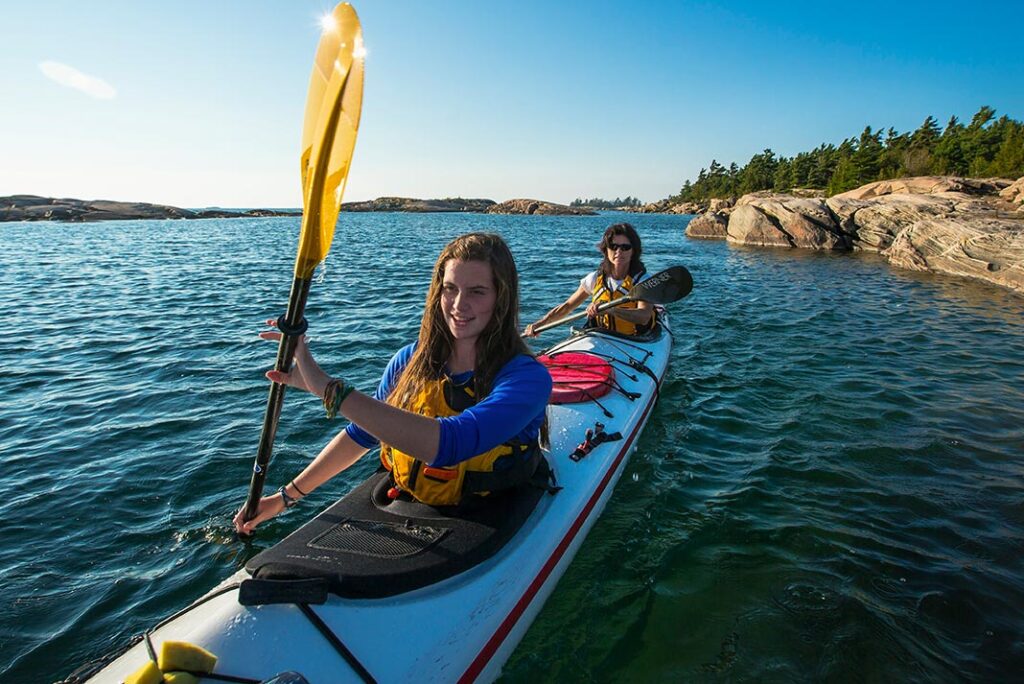
This image is property of paddlingmagazine-images.s3.amazonaws.com.
Protection and Safety
When it comes to protection and safety, both kayak skirts and cockpit covers have their advantages.
Waterproof and Water Resistance
One of the primary functions of a kayak skirt is to provide waterproofing and prevent water from entering the cockpit. Look for skirts that are made from materials with good waterproof properties, such as neoprene. The skirt should snugly fit around your waist and the cockpit rim, creating a tight seal that keeps water out even in challenging conditions.
While cockpit covers are not intended for use on the water, they still offer water resistance when properly fitted over the cockpit. This prevents rainwater from seeping in, keeping the interior of the kayak dry and preventing damage.
Secure Fit and Reinforcements
Both kayak skirts and cockpit covers should fit securely and snugly over the cockpit to provide maximum protection. A well-fitted skirt should not easily come undone, even during rolling or challenging maneuvers. Look for skirts with adjustable straps or braces to ensure a comfortable fit and added security.
Cockpit covers should have a means of attachment, such as a drawstring or elastic band, to secure them tightly over the cockpit. Some covers also have reinforced edges or clips to prevent them from coming loose while being transported or stored.
Comfort and Convenience
Comfort and convenience are crucial factors to consider when choosing between a kayak skirt and a cockpit cover.
Breathability and Ventilation
Kayak skirts made from neoprene or other breathable materials can provide better ventilation and allow moisture to escape, resulting in a more comfortable paddling experience. This is especially important during strenuous activities when you might sweat. Nylon skirts, while not as breathable as neoprene, offer good airflow and can be an excellent option for warmer weather conditions.
Cockpit covers, on the other hand, do not affect comfort during paddling since they are used primarily for storage or transportation purposes. However, some covers may have built-in vents or mesh panels that promote airflow and prevent condensation buildup inside the kayak.
Access to Gear and Storage
Consider your need for accessing gear and storage while on the water. A kayak skirt, especially one with pockets or bungee cords, can provide convenient storage options for small items like keys, sunscreen, or a water bottle. It keeps these essentials easily accessible and within reach during your kayaking adventures.
Cockpit covers, on the other hand, do not offer direct access to the cockpit while in use. However, they can be used in conjunction with dry bags or cargo nets on your kayak to securely store and transport larger items.

This image is property of i.ebayimg.com.
Maintenance and Durability
Proper maintenance and durability are essential when investing in kayak gear. Consider how easy it is to clean and care for both kayak skirts and cockpit covers, as well as their expected longevity and any warranty coverage.
Cleaning and Care
Kayak skirts made from neoprene or nylon are generally easy to clean. Neoprene skirts can be wiped down with a damp cloth or rinsed with fresh water after use. For more extensive cleaning, follow the manufacturer’s instructions, which may involve using mild soap and warm water. Nylon skirts can also be cleaned with a damp cloth or soaked in warm soapy water before being air-dried.
Cockpit covers are usually made from materials that are easily wiped clean. Dust and debris can be removed with a damp cloth or gently brushed off. For more thorough cleaning, some covers can be washed by hand with mild soap and water, while others may be machine-washable on a gentle cycle.
Longevity and Warranty
The durability of kayak skirts and cockpit covers can vary depending on the quality of materials and construction. Higher-quality skirts and covers are more likely to withstand the rigors of regular use and resist wear and tear. Look for reinforced seams, strong stitching, and durable materials when making your selection.
Manufacturers often provide warranty coverage for their products. Check the warranty terms and conditions to understand what damages are covered, the duration of the warranty, and any specific care instructions that may affect the coverage.
Cost Comparison
The cost of kayak skirts and cockpit covers can vary depending on several factors, including the materials used, the brand, and any additional features or customization options.
Generally, kayak skirts tend to be more expensive than cockpit covers due to their additional functionality and waterproof properties. Neoprene skirts, in particular, are typically pricier than nylon skirts.
Cockpit covers, on the other hand, are usually more affordable since they serve a simpler purpose of protecting the cockpit during storage or transportation.
Consider your budget and needs when comparing the cost of kayak skirts and cockpit covers. Keep in mind that investing in high-quality gear can contribute to a more enjoyable and safe kayaking experience.
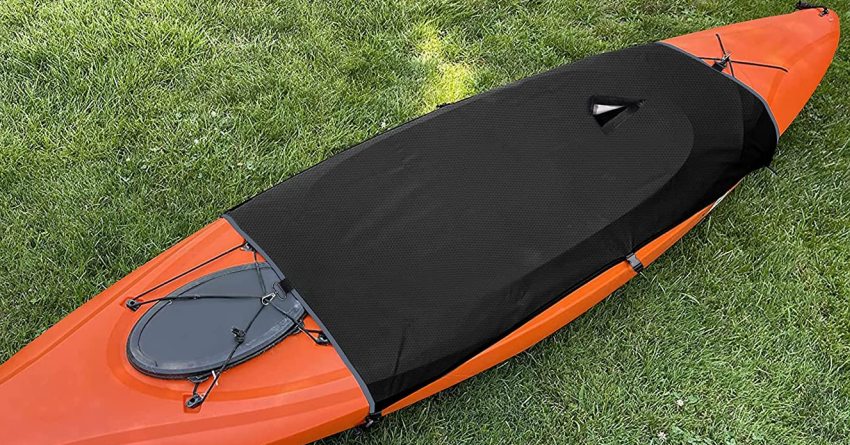
This image is property of paddlingspace.com.
Conclusion
When it comes to choosing between a kayak skirt and a cockpit cover, it’s important to consider your kayaking activity, weather conditions, transportation and storage preferences, ease of use, fitting and sizing, protection and safety, comfort and convenience, maintenance and durability, and cost. Both options provide unique benefits and serve different purposes.
Kayak skirts are ideal for paddlers engaging in intense activities or facing challenging water conditions. They offer excellent waterproofing, protect against the elements, and provide a snug and secure fit. On the other hand, cockpit covers are designed for storage and transportation purposes. They keep the interior of the kayak clean and protected from dust, debris, and water when not in use.
Ultimately, the choice between a kayak skirt and a cockpit cover will depend on personal preferences, the type of kayaking you do, and the specific needs of your kayak. By considering the factors outlined in this article, you can make an informed decision and choose the option that best suits your kayaking lifestyle.

